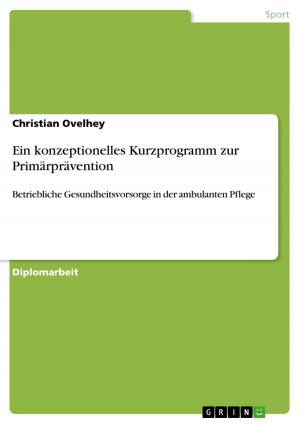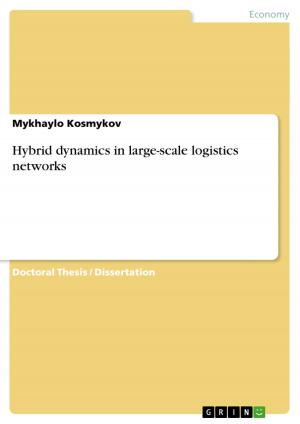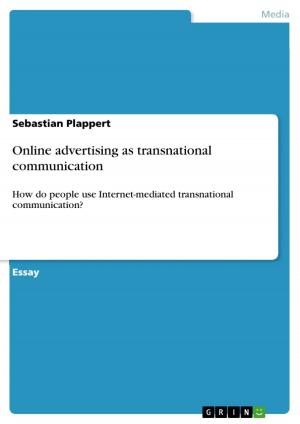Interviewing - a Way to Generate Qualitative Data
A Critical Analysis of Pre-crafted Interview Schedules
Nonfiction, Reference & Language, Language Arts| Author: | Corinna Colette Vellnagel | ISBN: | 9783640836222 |
| Publisher: | GRIN Publishing | Publication: | February 18, 2011 |
| Imprint: | GRIN Publishing | Language: | English |
| Author: | Corinna Colette Vellnagel |
| ISBN: | 9783640836222 |
| Publisher: | GRIN Publishing |
| Publication: | February 18, 2011 |
| Imprint: | GRIN Publishing |
| Language: | English |
Essay from the year 2010 in the subject Communications - Methods and Research Logic, grade: Excellent, The University of Surrey (Department of English), language: English, abstract: Generating data can be made for all kind of purposes and in several ways (Milena et al.: 2008), whereas the main focus lies on the distinction between quantitative and qualitative research (Gerson et al.: 2002). When it comes to research most people generally think of the more common, traditional and familiar quantitative research which includes methods such as questionnaires, the creation of theories and models or the accumulation of empirical data (Holliday: 2002). This paper deals with interviewing, more precisely with interview schedules, as a method of generating qualitative data within primary market research. The structure of the work is as follows: Starting up with a the theoretical foundation with regards to interviewing, its possibilities within qualitative research and its configuration possibilities in the first part, the second part deals with the analysis of a workshop held on the topic 'Generating Qualitative Data: Interviewing' within the lecture 'Introduction to Research Methods' in the MA course Intercultural Communication with International Business. Within the analysis of the interview schedule problems, difficulties and limits of working with pre-crafted, semi-structured interview schedules are being identified and pointed out. Although it is not common to write a paper in another but the neutral voice a voice change into the first person takes place due to the fact that this part of the paper (3 Practical Application within the Workshop 'Generating Qualitative Date: Interviewing') delves into the personal experience and therefore requires a more personalised style. Finally, the paper concludes with a short review of the difficulties occurring when using a pre-crafted semi-structured interview schedule.
Essay from the year 2010 in the subject Communications - Methods and Research Logic, grade: Excellent, The University of Surrey (Department of English), language: English, abstract: Generating data can be made for all kind of purposes and in several ways (Milena et al.: 2008), whereas the main focus lies on the distinction between quantitative and qualitative research (Gerson et al.: 2002). When it comes to research most people generally think of the more common, traditional and familiar quantitative research which includes methods such as questionnaires, the creation of theories and models or the accumulation of empirical data (Holliday: 2002). This paper deals with interviewing, more precisely with interview schedules, as a method of generating qualitative data within primary market research. The structure of the work is as follows: Starting up with a the theoretical foundation with regards to interviewing, its possibilities within qualitative research and its configuration possibilities in the first part, the second part deals with the analysis of a workshop held on the topic 'Generating Qualitative Data: Interviewing' within the lecture 'Introduction to Research Methods' in the MA course Intercultural Communication with International Business. Within the analysis of the interview schedule problems, difficulties and limits of working with pre-crafted, semi-structured interview schedules are being identified and pointed out. Although it is not common to write a paper in another but the neutral voice a voice change into the first person takes place due to the fact that this part of the paper (3 Practical Application within the Workshop 'Generating Qualitative Date: Interviewing') delves into the personal experience and therefore requires a more personalised style. Finally, the paper concludes with a short review of the difficulties occurring when using a pre-crafted semi-structured interview schedule.















